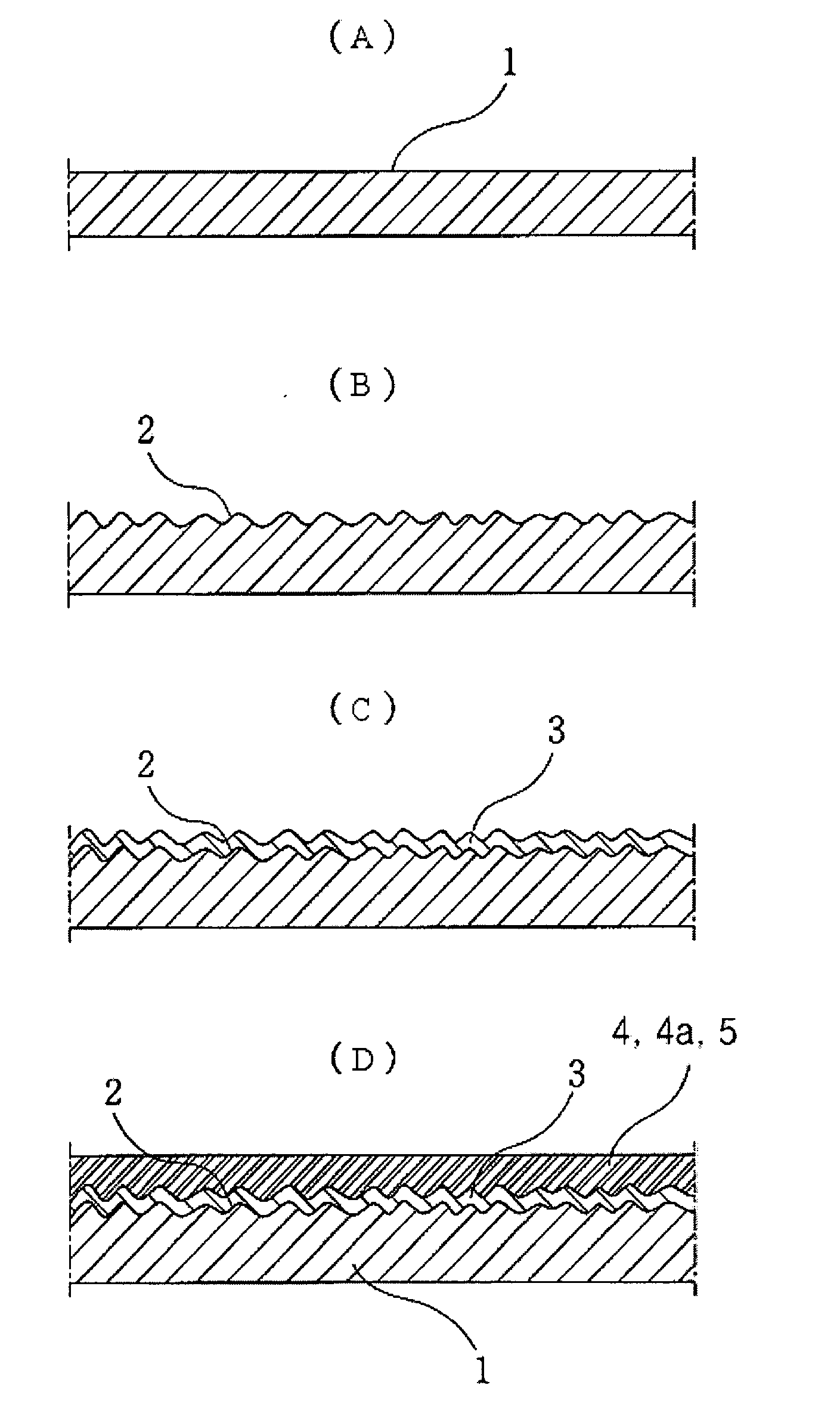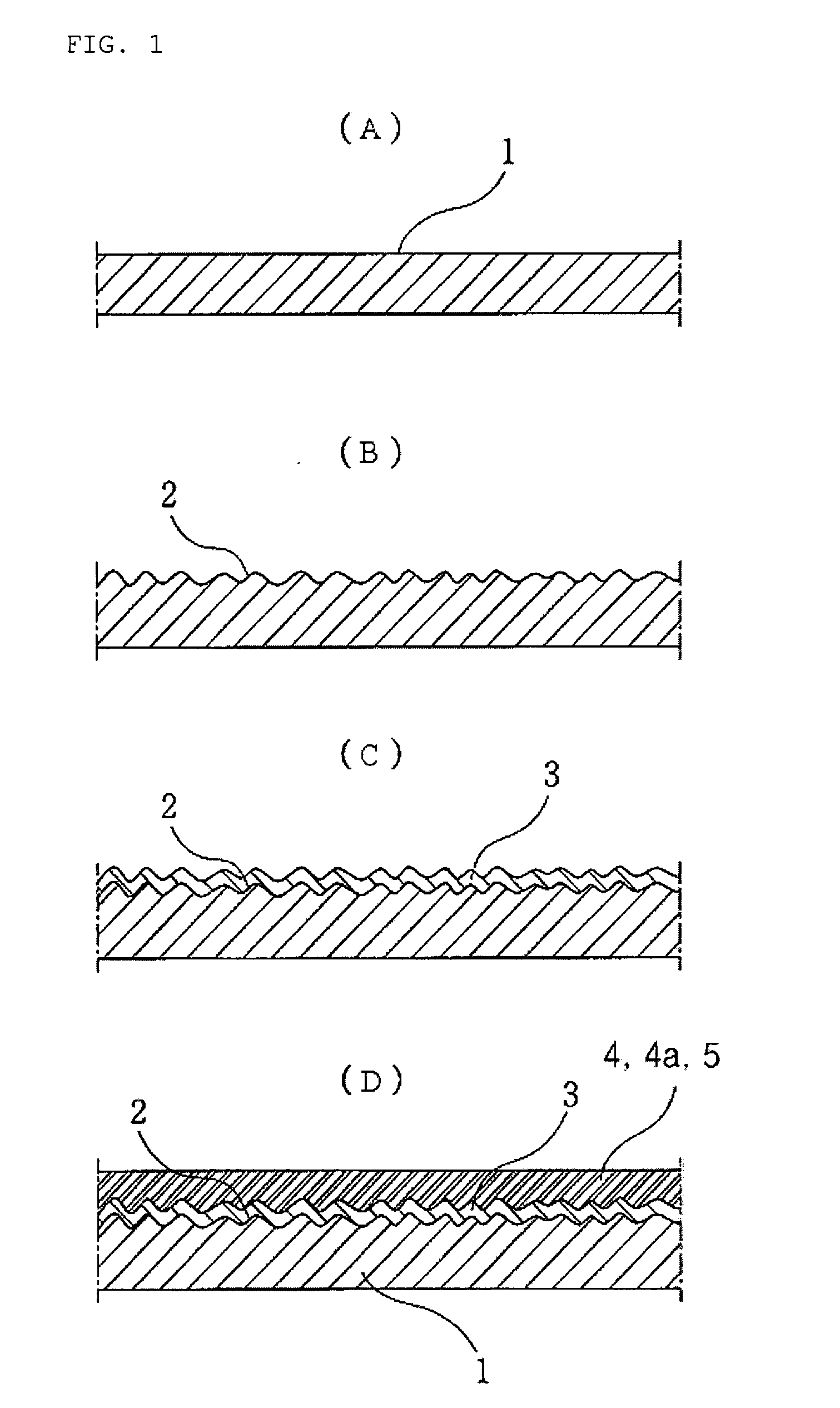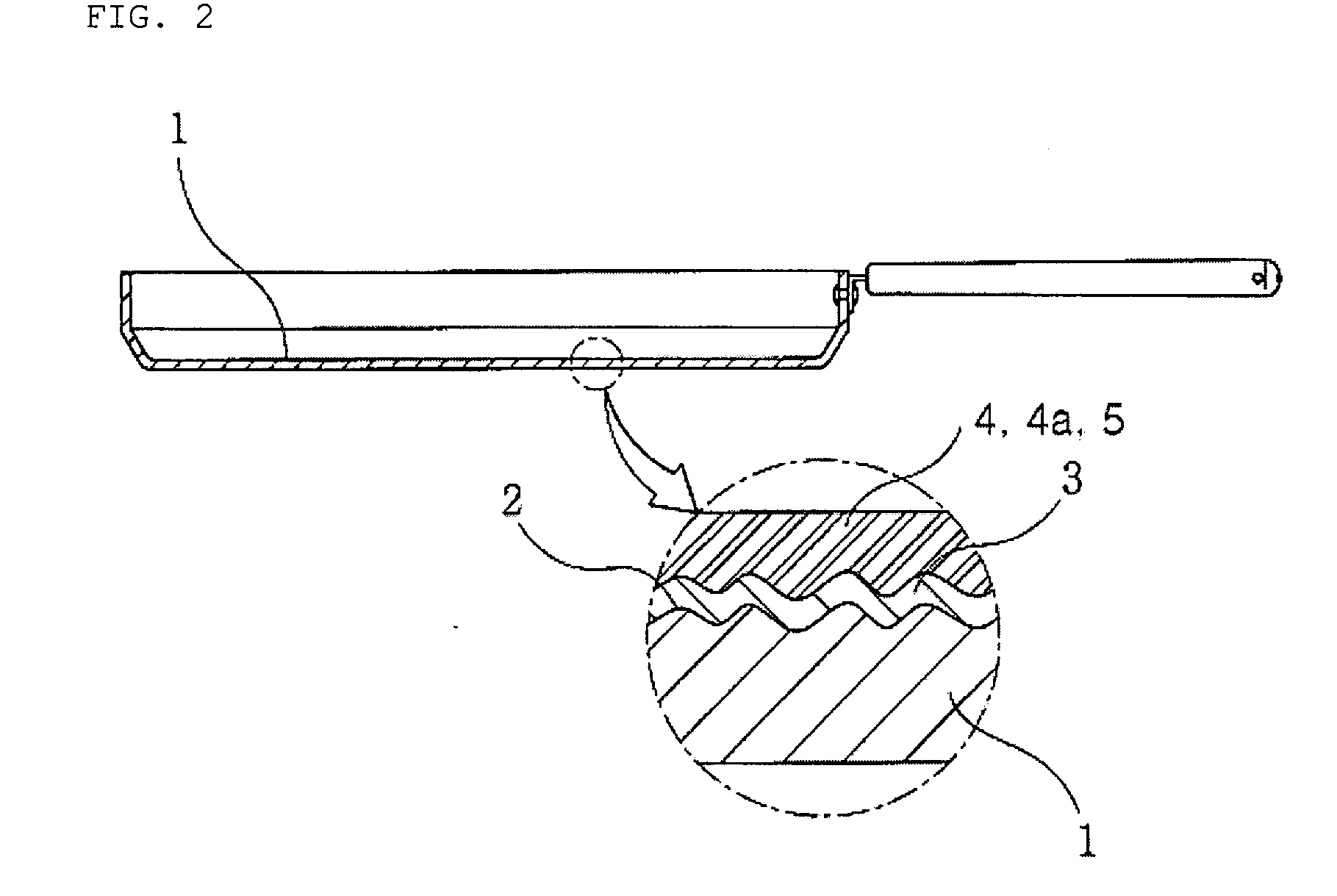Structure of coating layer for heat-cooker
a technology of coating layer and heat-cooker, which is applied in the direction of domestic stoves or ranges, domestic cooling devices, and ways, etc., can solve the problems of reducing the shelf life of the cooker. , to achieve the effect of good heat conductivity, extended shelf life and strong surface strength
- Summary
- Abstract
- Description
- Claims
- Application Information
AI Technical Summary
Benefits of technology
Problems solved by technology
Method used
Image
Examples
example 1
[0031]Initially, a roughness-forming step is carried out to increase the surface area to which aluminum oxide to be subsequently deposited is firmly adhered, said step comprising subjecting the inner surface of a body (1) of an aluminum heat-cooker as shown in FIG. 1(a) to sandblastering so that a fine corrugated pattern (2) is formed on the inner surface of the body (1) as shown in FIG. 1(b) and surface roughness is created.
[0032]After said roughness-forming step is completed, a washing and drying step is carried out to remove contaminants due to sandblastering.
[0033]After said washing and drying step is completed, a step of forming an aluminum oxide film layer is carried out to form a robust aluminum oxide film layer (3), which has enhanced anti-corrosive and anti-abrasive properties, as shown in FIG. 1(c), said step comprising subjecting the entire corrugated pattern (2) formed on the inner surface of the body (1) of a heat-cooker to anodizing (anodic oxidation) using oxalic acid...
example 2
[0037]Initially, a roughness-forming step is carried out to increase the surface area to which aluminum oxide to be subsequently deposited is firmly adhered, said step comprising subjecting the inner surface of a body (1) of an aluminum heat-cooker as shown in FIG. 1(a) to sandblastering so that a fine corrugated pattern (2) is formed on the inner surface of the body (1) as shown in FIG. 1(b) and surface roughness is created.
[0038]After said roughness-forming step is completed, a washing and drying step is carried out to remove contaminants due to sandblastering.
[0039]After said washing and drying step is completed, a step of forming an aluminum oxide film layer is carried out to form a robust aluminum oxide film layer (3), which has enhanced anti-corrosive and anti-abrasive properties, as shown in FIG. 1(c), said step comprising subjecting the entire corrugated pattern (2) formed on the inner surface of the body (1) of a heat-cooker to anodizing (anodic oxidation) using oxalic acid...
example 3
[0043]Initially, a roughness-forming step is carried out to increase the surface area to which aluminum oxide to be subsequently deposited is firmly adhered, said step comprising subjecting the inner surface of a body (1) of an aluminum heat-cooker as shown in FIG. 1(a) to sandblastering so that a fine corrugated pattern (2) is formed on the inner surface of the body (1) as shown in FIG. 1(b) and surface roughness is created.
[0044]After said roughness-forming step is completed, a washing and drying step is carried out to remove contaminants due to sandblastering.
[0045]After said washing and drying step is completed, a step of forming an aluminum oxide film layer is carried out to form a robust aluminum oxide film layer (3), which has enhanced anti-corrosive and anti-abrasive properties, as shown in FIG. 1(c), said step comprising subjecting the entire corrugated pattern (2) formed on the inner surface of the body (1) of a heat-cooker to anodizing (anodic oxidation) using oxalic acid...
PUM
| Property | Measurement | Unit |
|---|---|---|
| Length | aaaaa | aaaaa |
Abstract
Description
Claims
Application Information
 Login to View More
Login to View More - R&D
- Intellectual Property
- Life Sciences
- Materials
- Tech Scout
- Unparalleled Data Quality
- Higher Quality Content
- 60% Fewer Hallucinations
Browse by: Latest US Patents, China's latest patents, Technical Efficacy Thesaurus, Application Domain, Technology Topic, Popular Technical Reports.
© 2025 PatSnap. All rights reserved.Legal|Privacy policy|Modern Slavery Act Transparency Statement|Sitemap|About US| Contact US: help@patsnap.com



